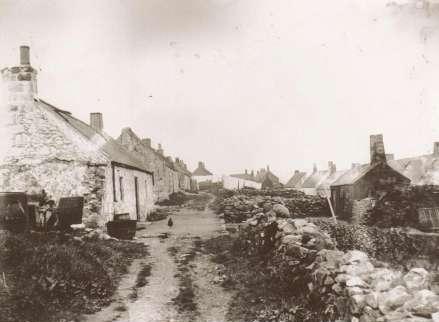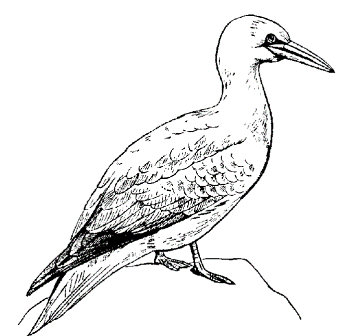
Gannet |
 Did you
know that 68% of the world population of the Northern Gannet breeds
around the coasts of Great Britain, with the largest colonies on the
Bass Rock in the Firth of Forth and on Borerayand in St Kilda? No, I
didnít know either but now we both know.
Did you
know that 68% of the world population of the Northern Gannet breeds
around the coasts of Great Britain, with the largest colonies on the
Bass Rock in the Firth of Forth and on Borerayand in St Kilda? No, I
didnít know either but now we both know.
Gannets are one of the largest seabirds seen on our coasts and their plumage is white with black wing tips. They have a light bluish bill and light blue eyes surrounded by bare, black skin. During breeding, the head and neck are brushed in a delicate yellow. A fully mature adult can weigh nearly 5 Kgs.
 Since
2007 Iíve noticed a big increase in the number of transient Gannets
offshore Portlethen, previously you would see the occasional solitary
Gannet or maybe a pair however over the last two years itís quite common
to see many individuals, pairs and even larger groups on their way to or
from their feeding grounds.
Since
2007 Iíve noticed a big increase in the number of transient Gannets
offshore Portlethen, previously you would see the occasional solitary
Gannet or maybe a pair however over the last two years itís quite common
to see many individuals, pairs and even larger groups on their way to or
from their feeding grounds.
Generally speaking they are always on the move and it would be very rare to actually see a Gannet roosting or resting along our coastline. In fact they nest in large colonies, on cliffs overlooking the ocean or on small rocky islets and they will normally lay one egg which is chalky blue in colour.
I wasnít going to include the Gannet in this list of local birds because itís not one that you see here except for those that are on the move to and from the feeding grounds. However on one occasion in the 1970ís, on one of our many beachcombing forays, near ďKail PotsĒ south of Downies, we discovered a nest with a single blue egg which had us scratching our heads as to what it was. The answer became apparent when we discovered a dead Gannet lying a few yards away. Itís still a mystery why a single Gannet would have chosen this unlikely place to lay an egg. Maybe those with a passion for ornithology could enlighten and explain this particular event?